Abstract
An outbreak of influenza caused by the A(H1N1) subtype in military recruits in February 1978 afforded an opportunity to study the association of ABO blood groups with influenza morbidity and serological response. Fifty-eight per cent of 336 recruits became clinically ill. There was no differential distribution of clinical influenza by blood group. However, seroconversion to a titre of greater than or equal to 20 was significantly and appreciably higher in groups A and B than O and AB. Also, among those with serologically confirmed clinical influenza, the occurrence was significantly higher in groups A and B than groups O and AB.
Full text
PDF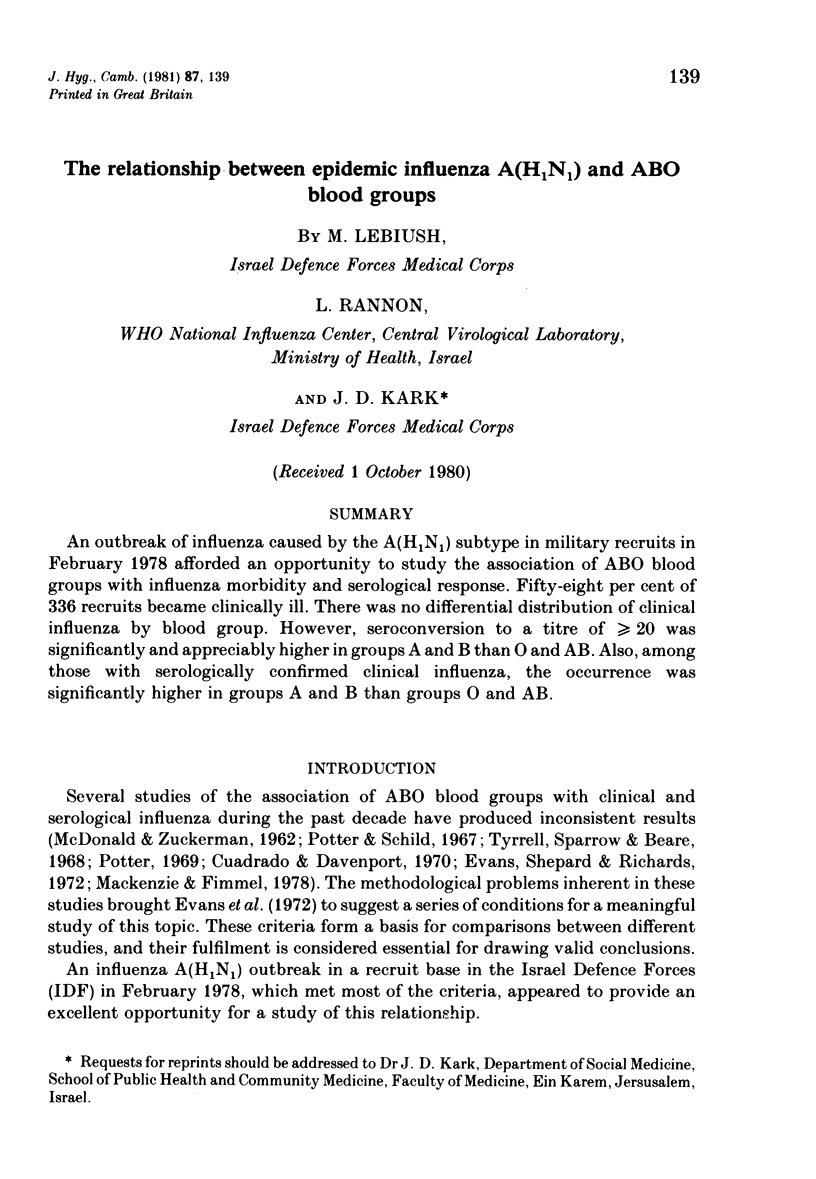
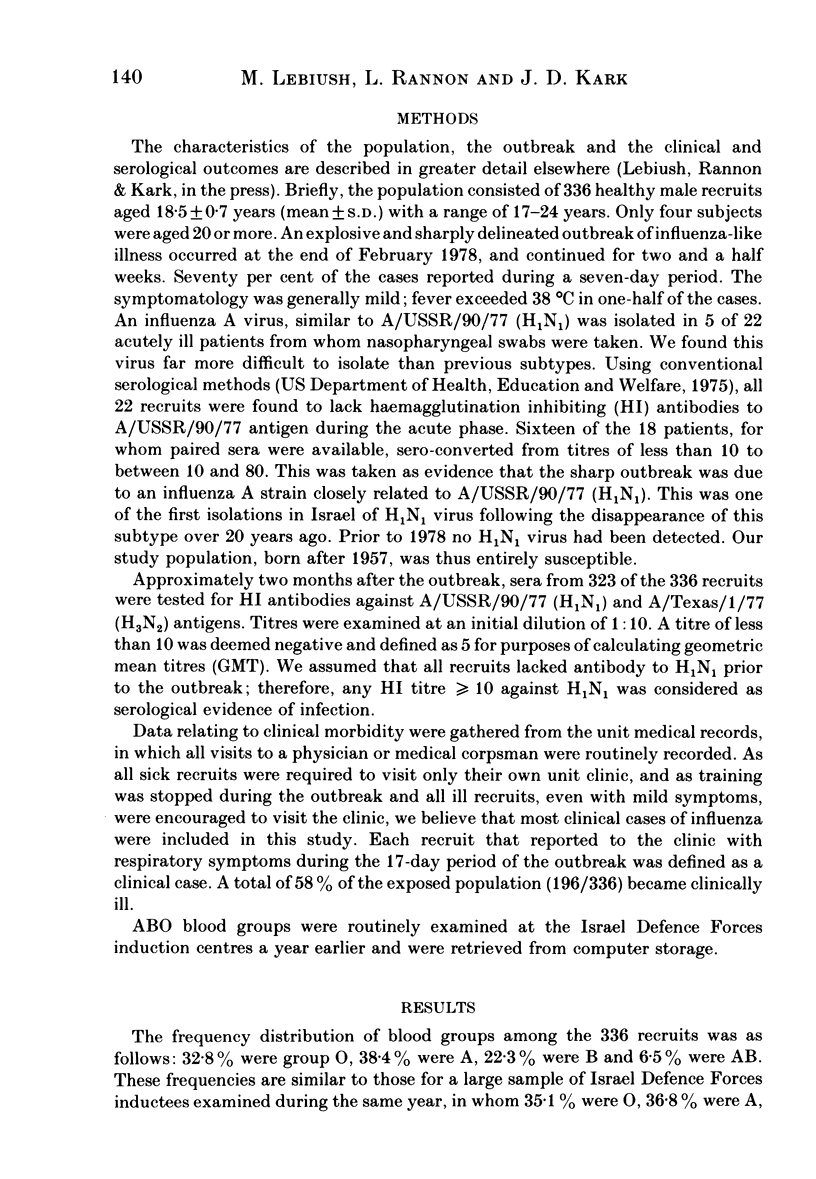
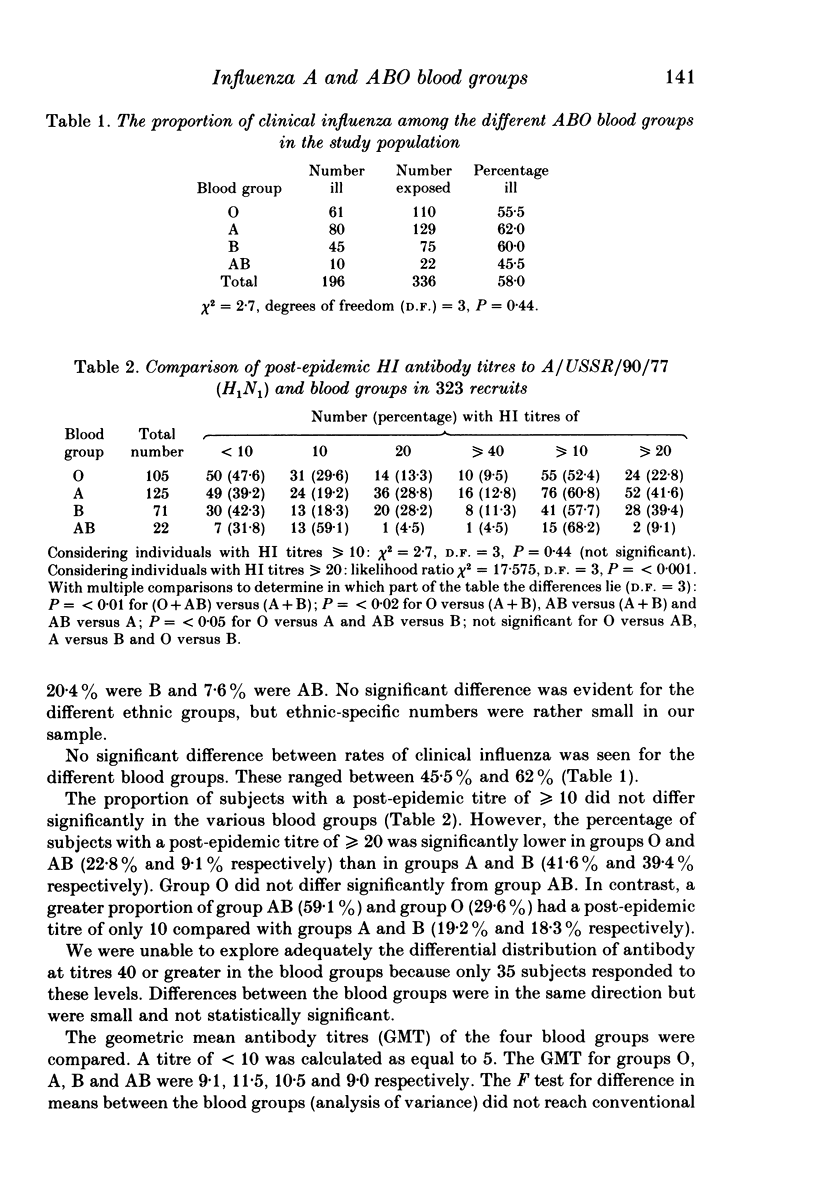
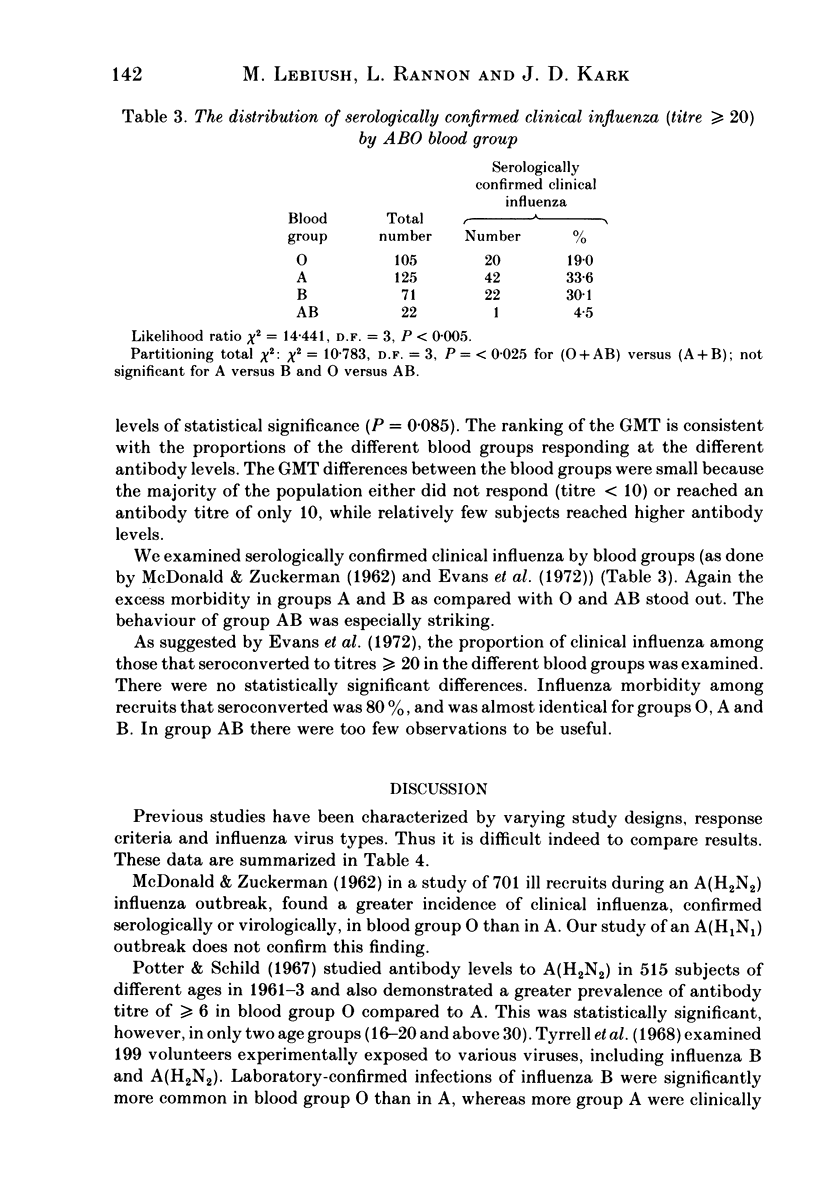
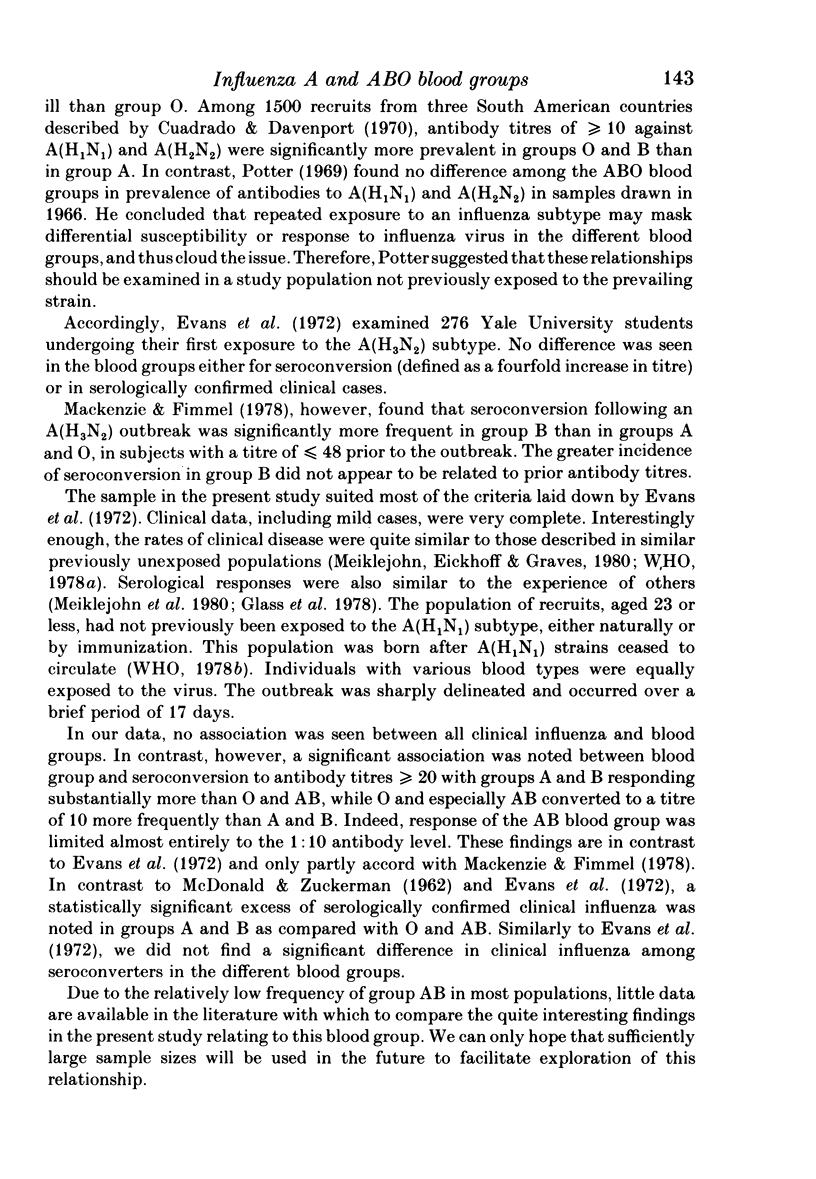
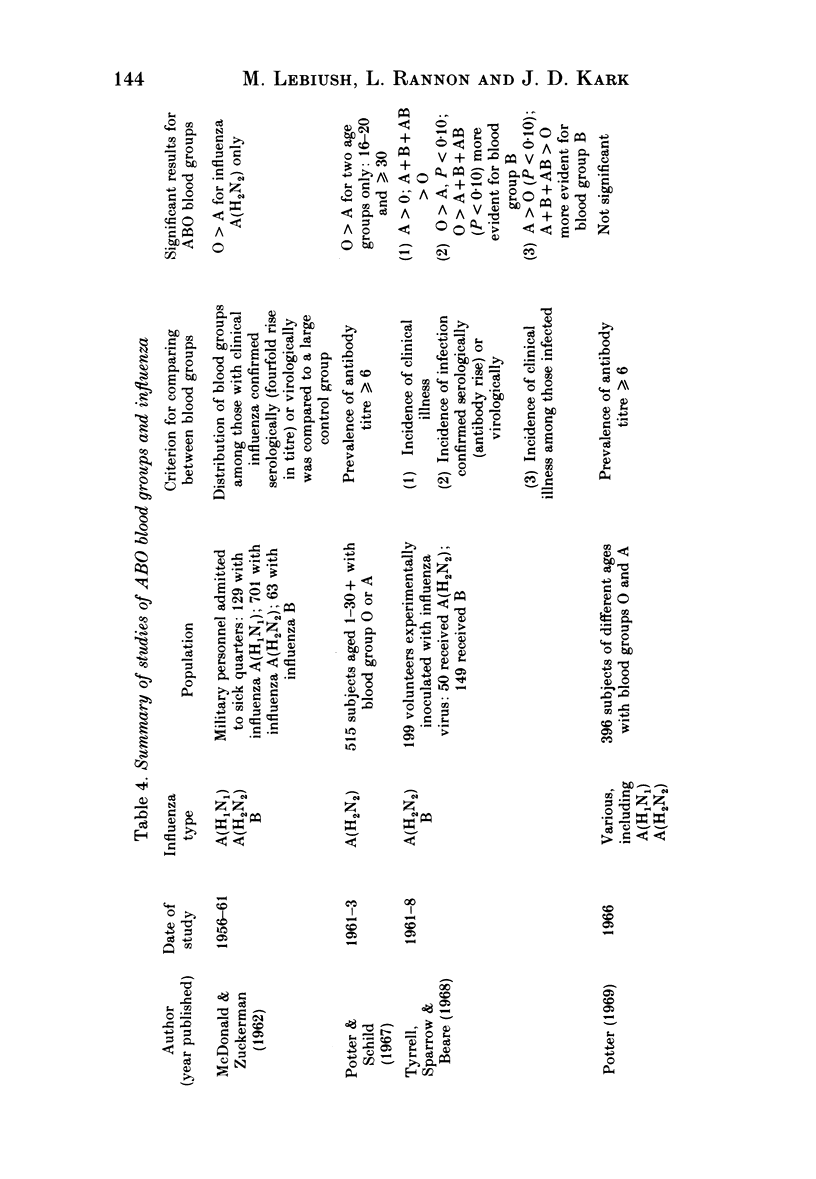
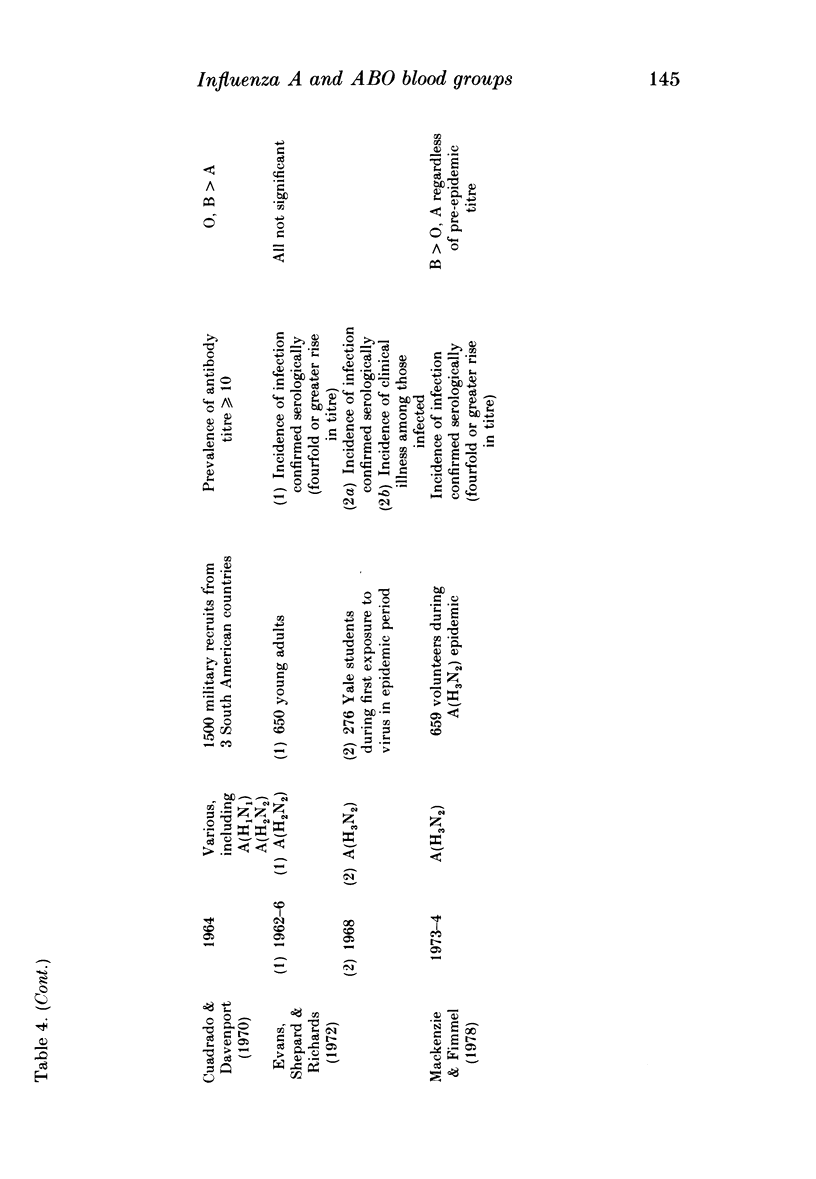
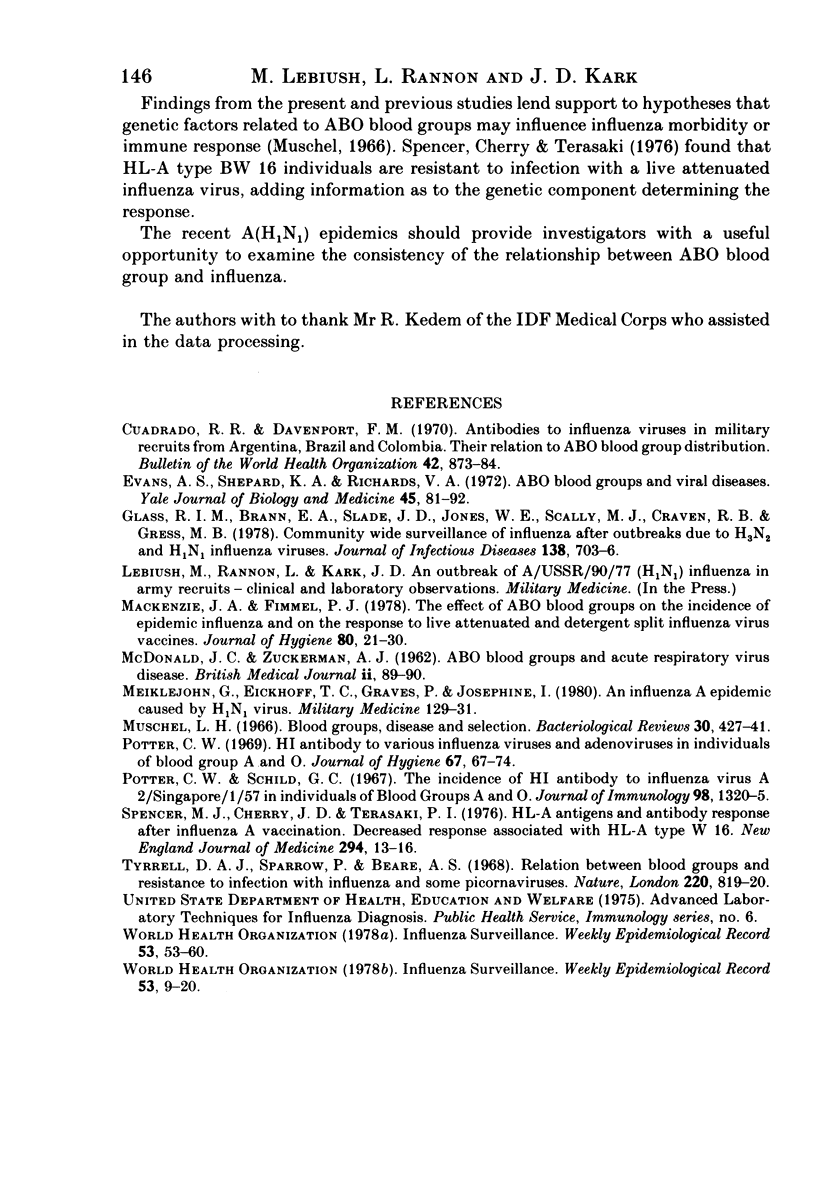
Selected References
These references are in PubMed. This may not be the complete list of references from this article.
- Cuadrado R. R., Davenport F. M. Antibodies of influenza viruses in military recruits from Argentina, Brazil and Colombia. Their relation to ABO blood group distribution. Bull World Health Organ. 1970;42(6):873–884. [PMC free article] [PubMed] [Google Scholar]
- Evans A. S., Shepard D. A., Richards V. A. ABO blood groups and viral diseases. Yale J Biol Med. 1972 Apr;45(2):81–92. [PMC free article] [PubMed] [Google Scholar]
- Glass R. I., Brann E. A., Slade J. D., Jones W. E., Scally M. J., Craven R. B., Gregg M. G. Community-wide surveillance of influenza after outbreaks due to H3N2 (A/Victoria/75 and A/Texas/77) and H1N1 (A/USSR/77) influenza viruses, Mercer County, New Jersey, 1978. J Infect Dis. 1978 Nov;138(5):703–706. doi: 10.1093/infdis/138.5.703. [DOI] [PubMed] [Google Scholar]
- Mackenzie J. S., Fimmel P. J. The effect of ABO blood groups on the incidence of epidemic influenza and on the response to live attenuated and detergent split influenza virus vaccines. J Hyg (Lond) 1978 Feb;80(1):21–30. doi: 10.1017/s0022172400053365. [DOI] [PMC free article] [PubMed] [Google Scholar]
- McDonald J. C., Zuckerman A. J. ABO Blood Groups and Acute Respiratory Virus Disease. Br Med J. 1962 Jul 14;2(5297):89–90. doi: 10.1136/bmj.2.5297.89. [DOI] [PMC free article] [PubMed] [Google Scholar]
- Meiklejohn G., Eickhoff T. C., Graves P., I J. An influenza A epidemic caused by H1N1 virus. Mil Med. 1980 Feb;145(2):129–131. [PubMed] [Google Scholar]
- Muschel L. H. Blood groups, disease, and selection. Bacteriol Rev. 1966 Jun;30(2):427–441. doi: 10.1128/br.30.2.427-441.1966. [DOI] [PMC free article] [PubMed] [Google Scholar]
- Potter C. W. HI antibody to various influenza viruses and adenoviruses in individuals of blood groups A and O. J Hyg (Lond) 1969 Mar;67(1):67–74. doi: 10.1017/s0022172400041437. [DOI] [PMC free article] [PubMed] [Google Scholar]
- Potter C. W., Schild G. C. The incidence of HI antibody to Influenza virus A2/Singapore/ 1/57 in individuals of blood groups A and O. J Immunol. 1967 Jun;98(6):1320–1325. [PubMed] [Google Scholar]
- Spencer M. J., Cherry J. D., Terasaki P. I. HL-A antigens and antibody response after influenza A vaccination. Decreased response associated with HL-A type W16. N Engl J Med. 1976 Jan 1;294(1):13–16. doi: 10.1056/NEJM197601012940104. [DOI] [PubMed] [Google Scholar]
- Tyrrell D. A., Sparrow P., Beare A. S. Relation between blood groups and resistance to infection with influenza and spome picornaviruses. Nature. 1968 Nov 23;220(5169):819–820. doi: 10.1038/220819a0. [DOI] [PubMed] [Google Scholar]


